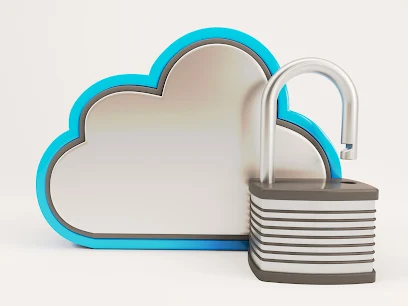Introduction
Cyber attacks have become part of everyday news, and terms like “malware” and “ransomware” are thrown around a lot. While both can seriously harm individuals and businesses, they’re not the same thing. Understanding the difference can help you react faster and stay better protected.
In this article, we’ll break down what malware and ransomware are, how they work, and why knowing the difference is more than just tech jargon — it can save your data, time, and money.
What is Malware?
Malware is short for malicious software. It's a broad term used to describe any program designed to harm a computer system or steal information. If it’s created to do damage, steal data, or spy on users — it falls under malware.
There are many types of malware, including:
-
Viruses – Attach themselves to files and spread.
-
Trojans – Disguise themselves as legitimate software.
-
Spyware – Monitors your activity without permission.
-
Adware – Bombards you with unwanted ads.
-
Keyloggers – Record your keystrokes to steal credentials.
Malware can slow down your computer, crash systems, delete files, or quietly collect data in the background.
What is Ransomware?
Ransomware is a type of malware — but it’s designed for one specific purpose: to lock your files or system and demand money to unlock them.
Once ransomware infects your device, it encrypts your data, making it completely unusable. Then it shows a message demanding a ransom, usually in cryptocurrency like Bitcoin. Victims are often given a deadline, with threats to delete or leak data if payment isn’t made.
Some common ransomware types include:
-
Crypto ransomware – Encrypts important files (like documents, images, and databases).
-
Locker ransomware – Locks the whole device, stopping you from accessing anything.
-
Double extortion ransomware – Not only locks data, but also threatens to publish it if ransom isn’t paid.
Key Differences Between Malware and Ransomware
| Feature | Malware | Ransomware |
|---|---|---|
| Definition | A general term for any harmful software | A specific kind of malware |
| Main Goal | Steal, spy, or damage | Lock files and demand money |
| Visibility | Often runs silently in the background | Makes itself known with a ransom demand |
| Types | Virus, Trojan, Spyware, etc. | Crypto, Locker, Double Extortion |
| Outcome | System slowdown, data theft, spying | Data loss or extortion |
| Example | Keylogger recording your credentials | Message locking your system with a timer |
So, while ransomware is malware, not all malware is ransomware.
How Do They Spread?
Both malware and ransomware can enter your system in similar ways:
-
Phishing emails with dangerous links or attachments
-
Fake software downloads
-
Infected websites
-
USB drives with pre-loaded viruses
Cybercriminals use tricks to get users to click, download, or install something they shouldn’t. One careless click is all it takes.
How to Stay Protected
Whether it’s malware or ransomware, prevention is always better than cure. Here’s how people and businesses can protect themselves:
1. Use Strong Security Tools
Antivirus and endpoint protection software can detect and block most threats early.
2. Update Everything
Always install the latest updates for your operating system, browser, and apps. Hackers often exploit old software.
3. Don’t Trust Unknown Links
Avoid clicking on links or downloading attachments from unknown sources — even if it looks like it’s from someone you know.
4. Back Up Regularly
Ransomware is less effective when you have clean backups of your data stored offline or in a secure cloud.
5. Enable Multi-Factor Authentication
Adding an extra layer of login protection helps prevent malware that tries to steal your credentials.
Why This Matters to Everyone
You don’t need to be a big business to become a target. Small businesses and even individual users are common victims. Ransomware attacks have shut down hospitals, schools, and city services. Malware has stolen millions in banking details and login credentials.
And once the damage is done, recovery is hard — and often expensive.
Conclusion
Malware and ransomware may seem similar, but knowing the difference can help you take the right steps to avoid a disaster. Malware is any kind of harmful software, while ransomware specifically locks your files and demands money. Both are dangerous, but ransomware tends to make itself known right away with scary messages and deadlines.
The good news? With smart habits, updated software, and the right tools, you can avoid falling victim. Don’t wait until your files are locked or your data is gone — stay alert, stay protected, and keep backups ready just in case.










